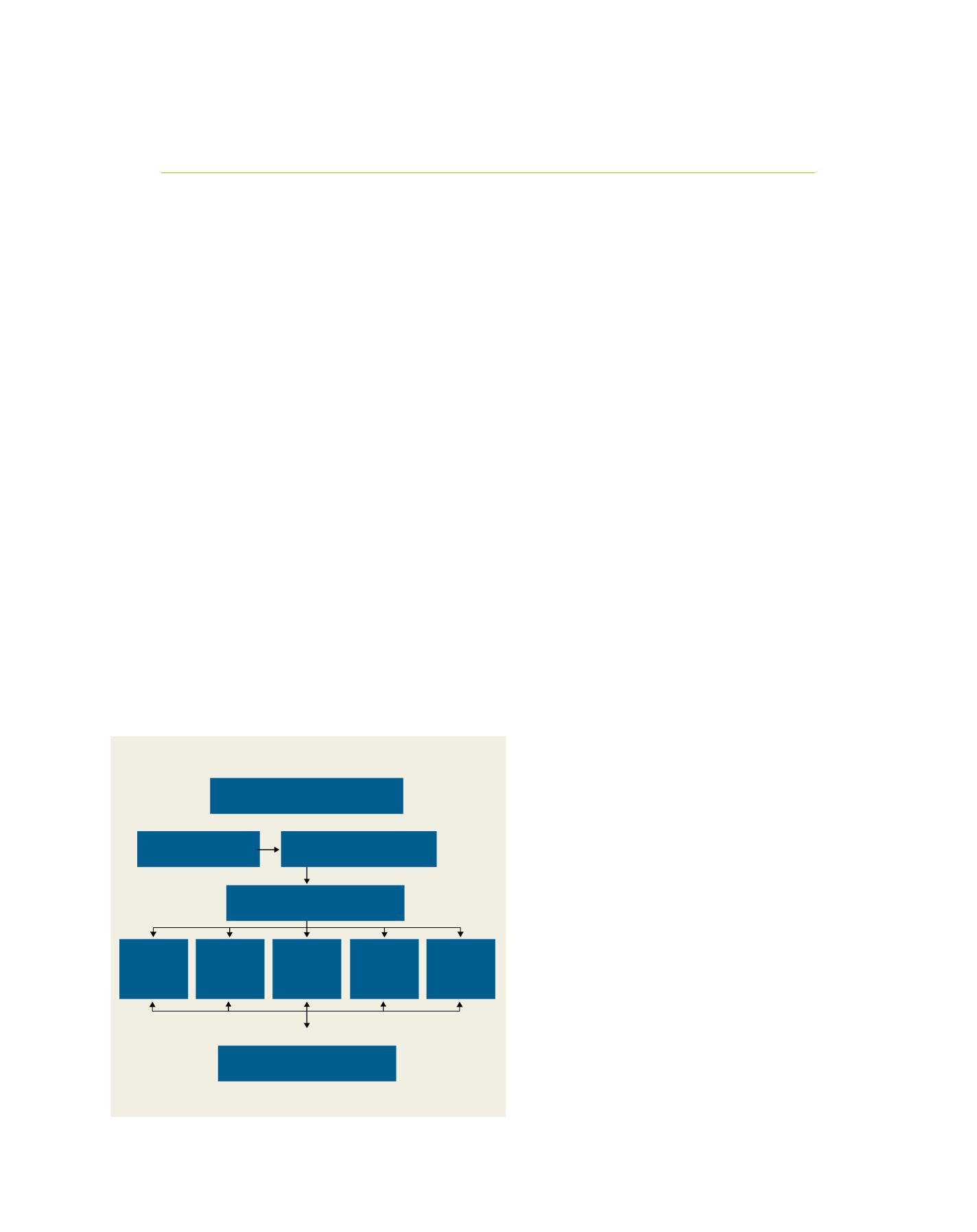

[
] 145
Governing drought information systems
Dr Roger S. Pulwarty, Chief, Climate and Societal Interactions Division and Director,
National Integrated Drought Information System (NIDIS),
National Oceanic and Atmospheric Administration (NOAA),
United States National Integrated Drought Information System
T
he National Integrated Drought Information System
Act of 2006 (NIDIS Act) builds on longstanding efforts
among agencies and institutions that had historically
been focused on drought risk assessment and response. The
NIDIS Act prescribes an inter-agency approach, led by the
National Oceanic and Atmospheric Administration (NOAA), to
“enable the nation to move from a reactive to a more proactive
approach to managing drought risks and impacts”.
NIDIS is authorized to provide an effective drought early warning
system and to coordinate federal research in support of the
system. The intention is to improve public awareness of drought
and its attendant impacts and improve the capacity of counties
and watershed organizations to reduce drought risks proactively.
At the national level, the multi-agency NIDIS Executive Council
oversees the NIDIS Program Office. The NIDIS Program coordinates
the multi-agency and multi-state NIDIS Program Implementation
Team (NPIT). The NPIT is currently composed of representatives
from federal, NOAA state and Native American tribal agencies, as well
as academic and private entities. The group is chaired by the director
of the NIDIS Program. An advisory Executive Council
also acts as the interagency recipient of feedback from
the Program Office on drought-related monitoring and
research priorities and gaps.
NIDIS supports or conducts impacts assessments,
forecast improvements, indicators and management
triggers and the development of watershed scale infor-
mation portals (web-based). In partnership with other
agencies, tribes and states, the NIDIS teams coordinate
and develop capacity to prototype and then implement
Regional Drought Early Warning Systems (RDEWS)
using the information portals and other sources of local
drought knowledge.
The role of Regional Drought Early Warning
Systems prototypes
The functions of the NIDIS RDEWS prototypes are to
derive and illustrate the benefits of:
• Improved knowledge management
• Better use of existing and new information products
• Coordination and capacity development for using
early warning systems.
The locations for RDEWS prototypes and imple-
mentations are based on an assessment of drought
sensitivity and criticality (including publicly identi-
fied information needs), drought type (snowpack or
rainfall driven, short-term, multi-year), and admin-
istrative unit (such as watershed, city or county).
The ‘prototype’ framing allows for existing barriers
to cross-agency collaboration to be addressed, inno-
vations and new information to be introduced and
tested, and the benefits of participation in design,
implementation and maintenance to be clarified. A
mature and evaluated pilot becomes the implemented
regional system and its lessons become more likely to
be successfully transferred within or to other as yet
underserved regions. NIDIS also conducts knowledge
assessments to:
• Determine where major gaps in data, forecasts,
communication and information delivery exist
• Identify innovations in drought risk assessment and
management at state and local levels
• Engage constituents in improving the effectiveness
of NIDIS.
D
isaster
R
isk
R
eduction
NIDIS Governance: Executive Council
NATIONAL
NIDIS Technical Working Groups
REGIONAL
Regional Drought
Early Warning Systems
WATERSHED, URBAN
Public
Awerness
and
Education
Engaging
Preparedness
Communities
Integrated
Monitoring
and
Forecasting
Interdisciplinary
Research
and
Applications
U.S.
Drought
Portal
NIDIS Implementation Team
NIDIS Program Office
NIDIS organization
Source: NIDIS
















